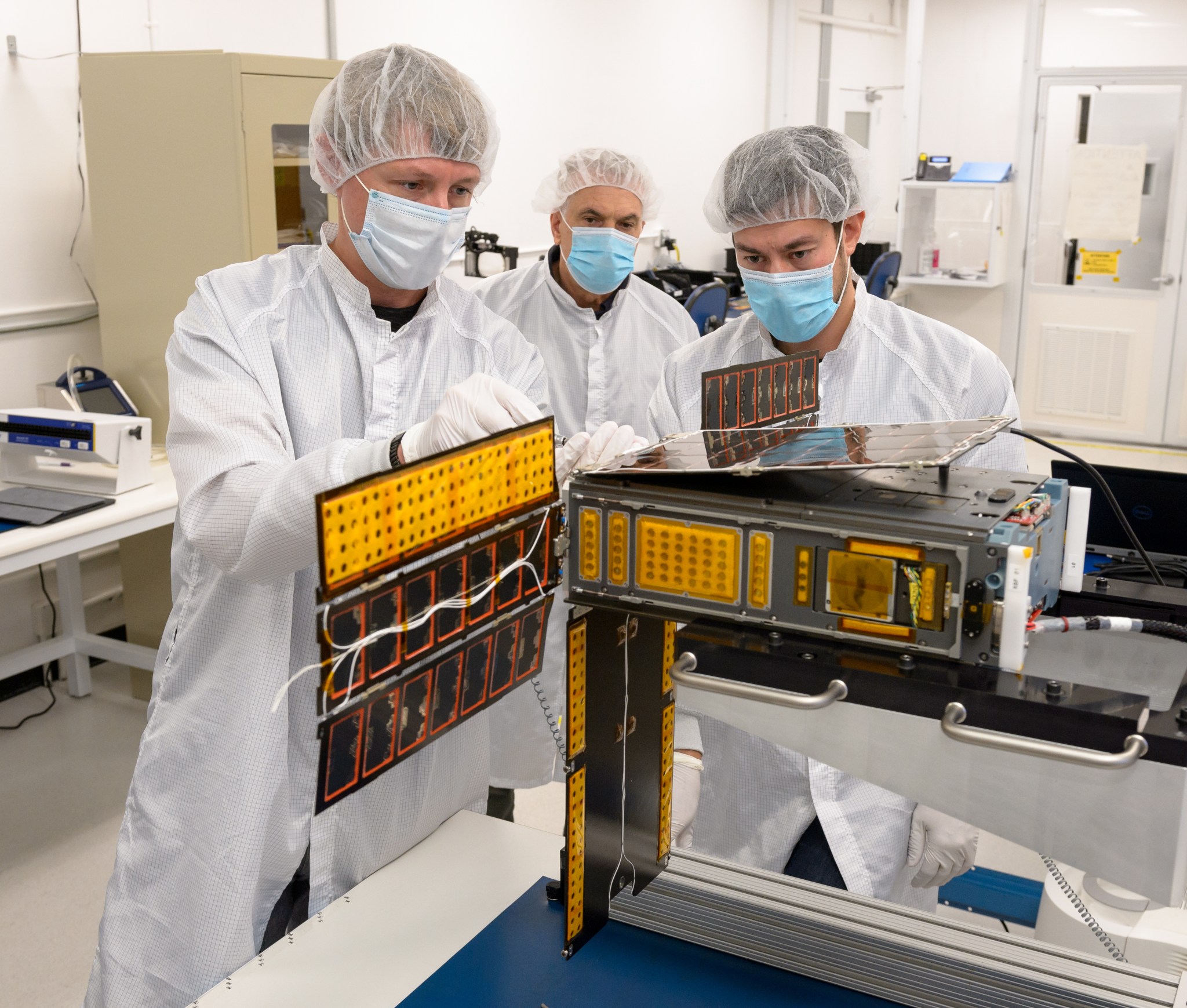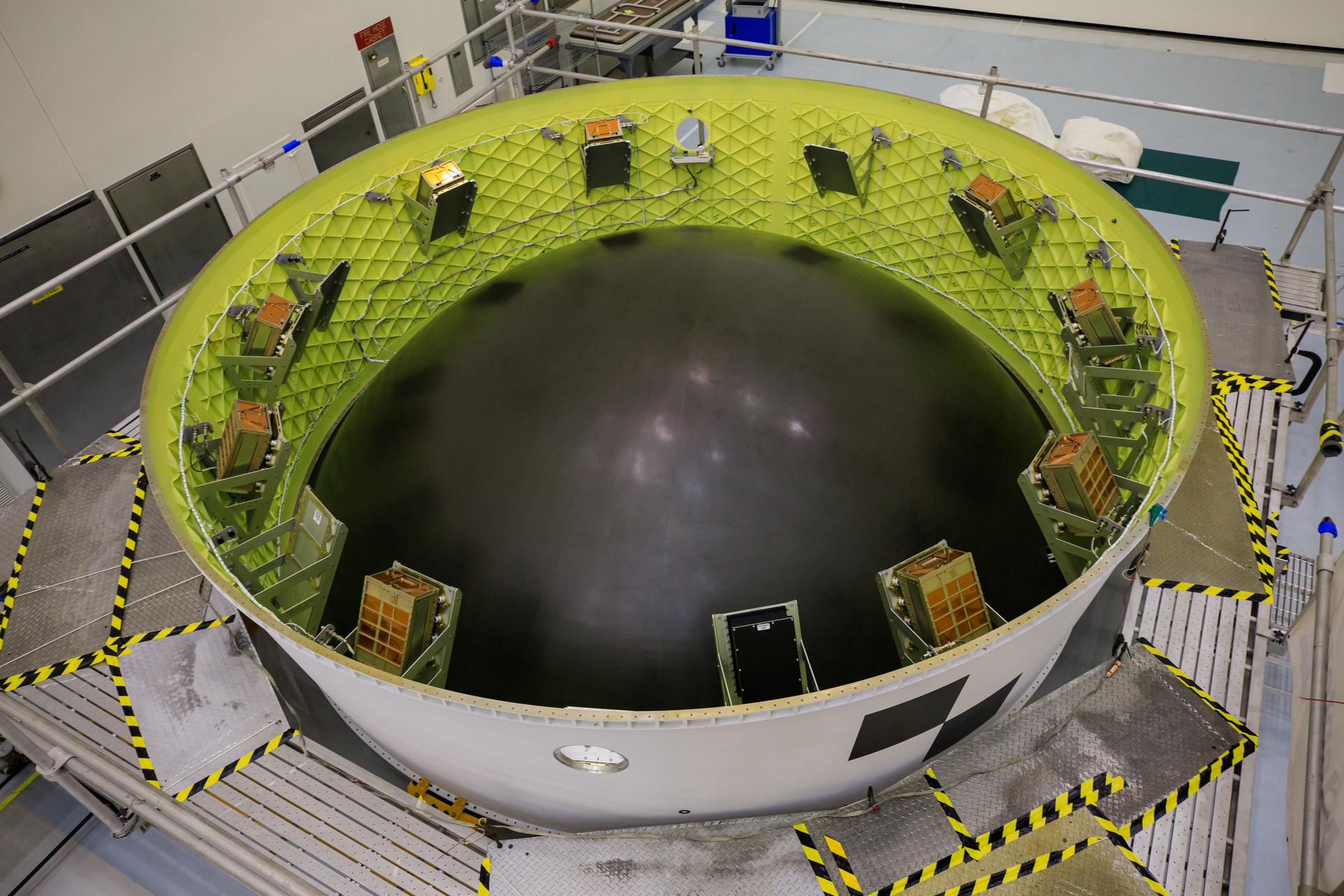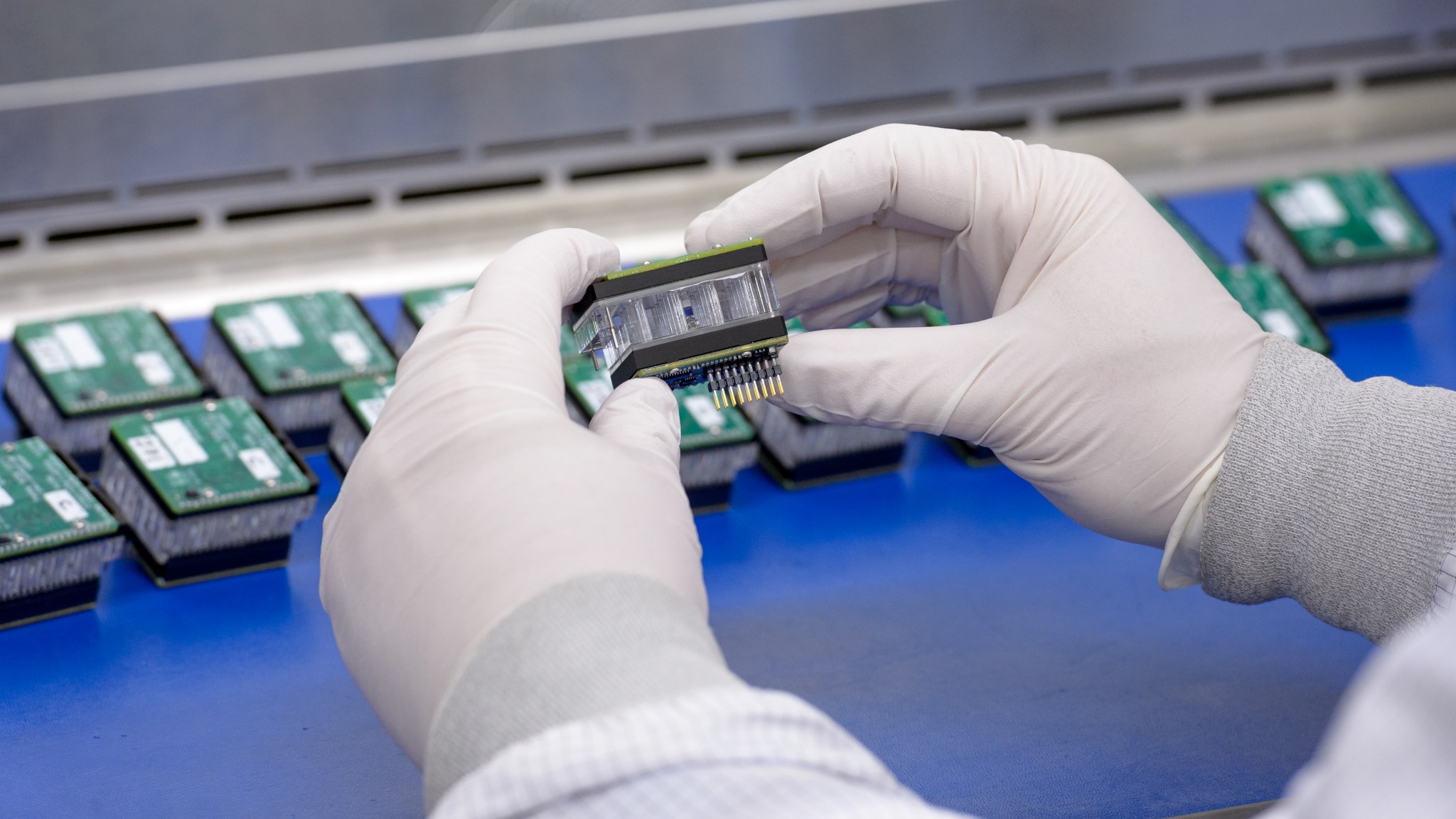
Poised to launch on Artemis I from NASA’s Kennedy Space Center in Florida, BioSentinel – a shoebox-sized CubeSat – will perform the first long-duration biology experiment in deep space. Artemis missions at the Moon will prepare humans to travel on increasingly farther and longer-duration missions to destinations like Mars, and BioSentinel will carry microorganisms, in the form of yeast, to fill critical gaps in knowledge about the health risks in deep space posed by space radiation.
Space radiation is like a demolition derby – on the nano scale. High-energy galactic cosmic rays and bursts of solar particles permeate deep space. These types of radiation can wreak havoc on electronics and living cells alike.
BioSentinel’s main job is to monitor the vital signs of yeast to see how they fare when exposed to deep space radiation. Because yeast cells have similar biological mechanisms to human cells, including DNA damage and repair, scrutinizing yeast in space will help us better understand the risks of space radiation to humans and other biological organisms and help us plan crewed exploration missions to the Moon and beyond. Specifically, BioSentinel will study yeast cell growth and metabolic activity after exposure to a high-radiation environment beyond low-Earth orbit.
BioSentinel is one of 10 secondary payloads – all of which are six-unit CubeSats – that have the rare opportunity to hitch a ride to deep space on Artemis I. These satellites are mounted within the Orion stage adapter aboard the Space Launch System (SLS) rocket. Once ejected into space, they will carry out science and technology investigations. Among this select group, BioSentinel is the only CubeSat to carry a life science experiment.
“BioSentinel is the first of its kind,” said Matthew Napoli, BioSentinel project manager at NASA’s Ames Research Center in California’s Silicon Valley. “It will carry living organisms farther into space than ever before. That’s really cool!”

Far Out
So far, the Apollo 17 mission to the Moon holds the record for the longest duration human deep space flight; the 1972 mission lasted 12.5 days, far shorter than future Mars missions that will take years to complete. Apollo-17 also carried NASA’s most recent experiments to study terrestrial life in space beyond low-Earth orbit. No space biology experiment – nor astronaut – has traveled beyond the Earth-Moon system, BioSentinel’s destination.
Within hours of launch, SLS will deploy BioSentinel in space. A few days later, the CubeSat will swing past the Moon and fly the rest of its six- to nine-month mission orbiting around the Sun. Once there, BioSentinel’s team will periodically trigger week-long yeast studies. BioSentinel will beam the data to Earth via NASA’s Deep Space Network using a radio developed by NASA’s Jet Propulsion Laboratory in Southern California.
A novel biosensor instrument is a key component of BioSentinel’s mission. The biosensor is a miniature biotechnology laboratory designed to measure how living yeast cells respond to long-term exposure to space radiation. At its core is a set of microfluidics cards – custom hardware that allows for the controlled flow of extremely small volumes of liquids. These cards provide a habitat for yeast and a way for scientists to observe them in real time.
BioSentinel’s biosensor technology is based on microfluidics systems developed for prior CubeSat missions. The most recent precursor was NASA’s E. coli Anti-Microbial Satellite, or EcAMSat, mission that flew in 2017. The satellite was deployed into low-Earth orbit from the International Space Station to study the genetic basis for how effectively antibiotics can combat bacteria in spaceflight.
A physical radiation detector instrument developed at NASA’s Johnson Space Center in Houston runs alongside BioSentinel’s biosensor. It characterizes and measures radiation, and its results will be compared to the biosensor’s biological response. Data from identical sets of BioSentinel’s instruments aboard the space station and in a lab at Ames will be used to check and compare the yeasts’ responses in different gravity and radiation environments.
SmallSat Subsystems Get Smaller
In 2013, Ames launched a small satellite mission to the Moon, the Lunar Atmosphere and Dust Environment Explorer. Although LADEE didn’t perform life science research, it helped pave BioSentinel’s path forward. Much of BioSentinel’s team worked on LADEE. They benefited with experience gained developing and operating a spacecraft mission near the Moon.
“The team wanted to have as much room for science payloads as possible aboard BioSentinel and the engineers delivered,” said Napoli. “LADEE had more room for avionics. A big challenge was miniaturization.”
LADEE was larger than a household refrigerator. BioSentinel’s engineers crammed a lot of subsystems in a small volume. Its avionics are roughly the size and shape of a half-gallon carton of milk.
“Now we have a CubeSat bus – the subsystems that run the spacecraft – small enough to leave two-thirds of the volume inside the spacecraft for science payloads. This was definitely a big deal,” said Napoli.
BioSentinel builds on Ames’ history, combining the center’s strengths in space biology research and small satellite technology. Ames has decades of experience studying life in space, including research aboard the space shuttle, the space station, and free-flying satellites. BioSentinel is funded by NASA’s Exploration Systems Development Mission Directorate, and more than 100 engineers and scientists worked on the project. Their contributions will help advance NASA’s goal of protecting astronaut health and performance during future deep space exploration missions.
Learn more:
- NASA story: What is BioSentinel?
- NASA featured image: Orion Stage Adapter Readied for Ride on Artemis I
For researchers:
- NASA technical webpage: Why Space Radiation Matters
- NASA technical webpage: Space Radiation Miniseries
For news media:
- Members of the news media interested in covering this topic should reach out to the NASA Ames newsroom.
Author: Gianine Figliozzi, NASA’s Ames Research Center




























